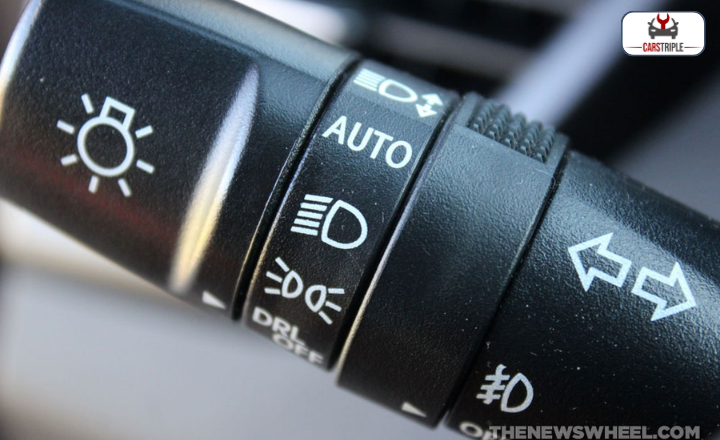Driving in foggy weather is tough because visibility is poor in it. Your car’s headlights have two settings: low-beam and high-beam. The default setting is usually low-beam, which shines light on the road in clear weather. The low beam symbol on your car’s dashboard indicates that the low beam headlights are turned on.
Using low beams while driving in the countryside is best for better visibility. Low beams are made to light up a small area right in front of your car, which helps when it’s foggy. Using high-beam headlights in fog can make it harder to see because the light reflects off water droplets in the air and creates a glare. This article will explain these headlight symbols and why they’re essential for safe driving.
The Low Beam Symbol
The low-beam light symbol on your car’s dashboard indicates that the low-beam headlights are turned on. Low beams provide sufficient light for driving at night without dazzling other drivers. The symbol typically resembles the letter D, with lines projecting slightly downward, helping to differentiate it from the high beam symbol.
Low beams are essential for safe nighttime driving, illuminating the road ahead without causing glare for oncoming traffic. Using them in dark or poorly lit conditions is necessary to maintain good visibility while being considerate of other drivers.
When Are Low Beams Used?
Low beams are used in various low-visibility conditions to help improve safety on the road. Using low-beam lights when driving in fog, rain, or heavy snow at night is essential, as it provides better visibility without causing glare for other drivers. Low beams are also recommended during twilight or when visibility is poor.
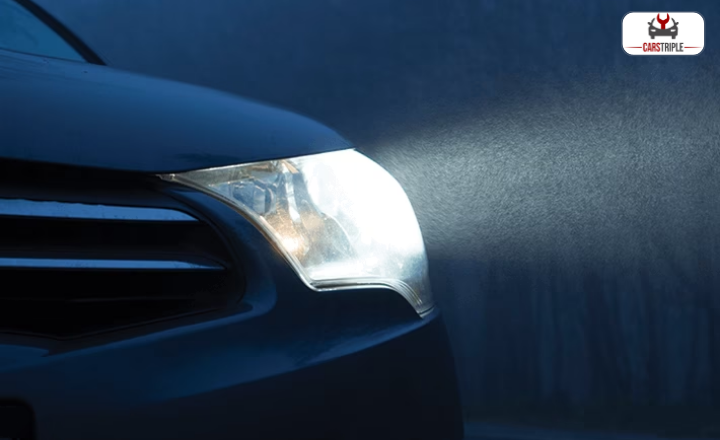
The primary purpose of low-beam headlights is to ensure other road users’ safety by providing downward-directed light. It helps cut through low-visibility situations. It’s crucial to turn on your low beams early enough to ensure your lights function properly. Investing in high-quality headlamps can further enhance safety and visibility in challenging driving conditions.
The High Beam Symbol
The high beam symbol on your dashboard looks like a blue headlight with five horizontal lines next to it. Your high beam lights are on when this symbol is lit, so you’re shining extra bright light ahead. This can help you see further down the road, up to 100 meters sometimes. Remember to switch back to regular headlights when oncoming traffic, as high beams can blind other drivers.
High beams are like spotlights for your car, sending out stronger light rays to help you see farther ahead. They’re designed to project light parallel to the road, not directly at other drivers. So, use your high if you need that extra visibility on a dark road or in bad weather.
When Are High Beams Used?
High-beam headlights are used for better visibility, especially on dark and poorly lit roads. They are accommodating in rural areas or on provincial roads without streetlights. High beams can help you see animals on the street, potholes, and even pedestrians in the dark.
In foggy conditions or when overtaking a slow-moving vehicle, using high beams can help increase your visibility and alert other drivers to your presence.

Using high beams while driving can help warn pedestrians of your presence and make it easier for them to see you, reducing the risk of accidents. In low-light conditions, lights from oncoming traffic are more visible, making it safer for everyone on the road.
It is important to remember to switch to low-beam headlights when approaching another vehicle to avoid blinding the other driver. This simple act of switching to low beams is good road etiquette and can prevent potential accidents.
If you encounter a car in opposing traffic that continues to use its high beams despite your use of low beams, it’s best not to retaliate by using your high beams as well. You should maintain good road etiquette by continuing to operate your low-beam headlights. Punishing in this situation can lead to dangerous consequences, and it’s essential to prioritize safety and avoid escalating the situation.
Fog Lights
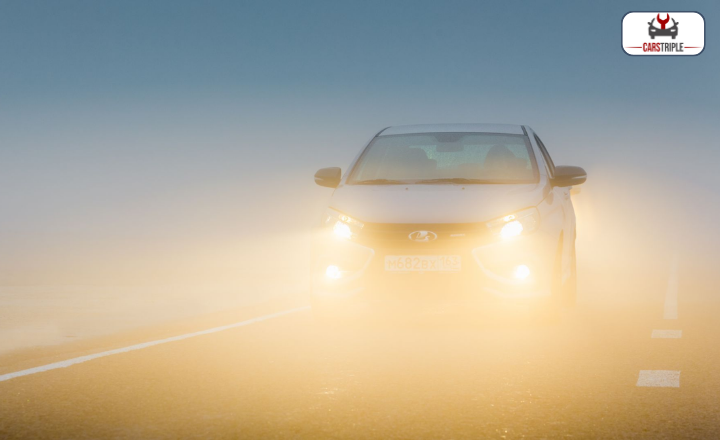
Fog lights are designed to improve visibility in foggy or low-visibility conditions but are not always essential. They can be helpful in extreme weather; they’re not standard on all vehicles and are often offered as optional extras on higher trim levels. If your car is equipped with fog lights, you’ll typically see a symbol similar to the low beam indicator, with an added vertical line through the diagonal ones.
It is essential to use fog lights responsibly and only when needed. Using them unnecessarily can blind other drivers and create a hazard on the road.
Parking Lights
Parking lights are also known as parking lamps or position lights. These were initially designed to alert other drivers to the presence of a parked car, especially in areas with limited street lighting. But their use has evolved and is now used for something other than this.
In modern times, parking lights are often used with headlights to increase the vehicle’s visibility. These are mainly used in low-light conditions such as dusk or dawn.
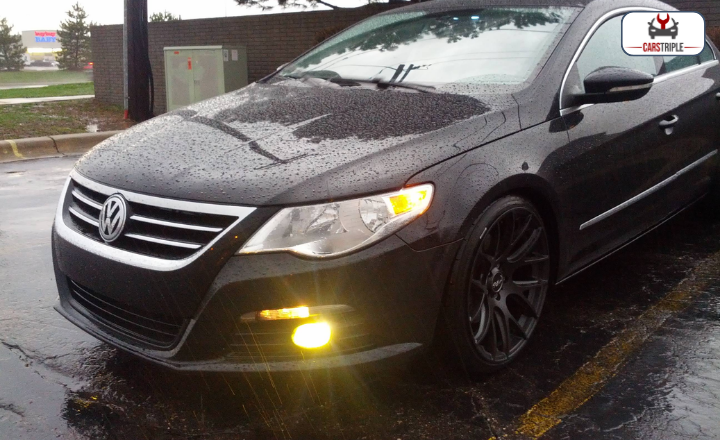
The parking light symbol is typically represented by a horizontally mirrored letter D with three lines emanating from it. Their original purpose may be less relevant today, but parking lights remain an essential safety feature on vehicles. It helps to make them more visible to other drivers on the road.
Daytime Running Lights
Daytime Running Lights (DRLs) are designed to be used during the day when natural light is still present and low beams aren’t necessary. They help make your vehicle more visible to other drivers. These are mainly used in overcast conditions when visibility may be reduced. DRLs are not as bright as low beams, but they serve the vital function of increasing visibility for your vehicle during the day.
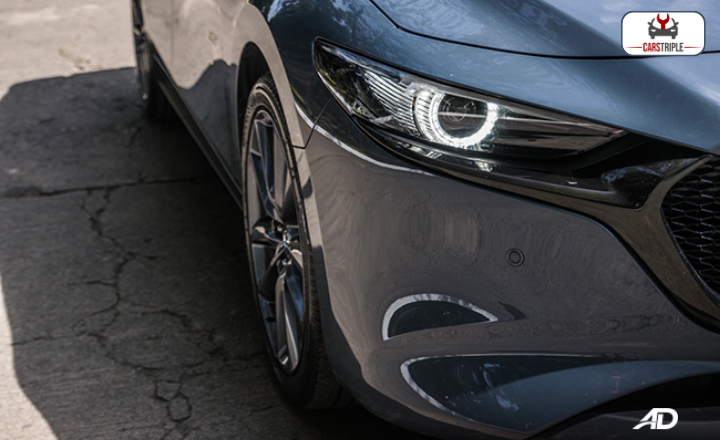
The symbol for DRLs is a letter D in a single color with three rows of dots extending from it. This makes it easy to identify when your DRLs are on. It’s important to remember that DRLs can improve visibility during the day. They are not a substitute for using headlights or low beams in low light or nighttime conditions.
Conclusion
Understanding the difference between the high and low beam symbols on your car’s dashboard is essential for safe driving at night. High beams provide maximum visibility but can blind oncoming drivers, while low beams offer a more focused and controlled light pattern. Using the correct setting depends on road conditions and traffic, which is essential. By being aware of these headlight symbols and using them appropriately, drivers can contribute to safer roads for themselves and others. Remember always to follow the rules of the road and be mindful of other drivers when using your headlights.
FAQ’s
Is there a specific symbol for fog lights on the dashboard?
Yes, there is a specific symbol for fog lights on the dashboard of a car. It typically looks like a small lamp with wavy lines coming out of it, representing the light cutting through the fog. This symbol is usually located near the headlight controls and will illuminate when you turn on your fog lights.
Can using high beams excessively damage my vehicle’s electrical system?
Excessively using high beams can damage your vehicle’s electrical system. The high current draw required to power the high beams for extended periods can strain the alternator and battery, leading to premature wear and potential failure.
Why do some cars have an automatic high beam feature?
Some cars have an automatic high beam feature to improve visibility and safety while driving at night. This feature uses sensors to detect oncoming vehicles or street lights and automatically switches between high and low beams as needed. It helps drivers avoid blinding others with their high beams while providing maximum visibility on dark roads.

